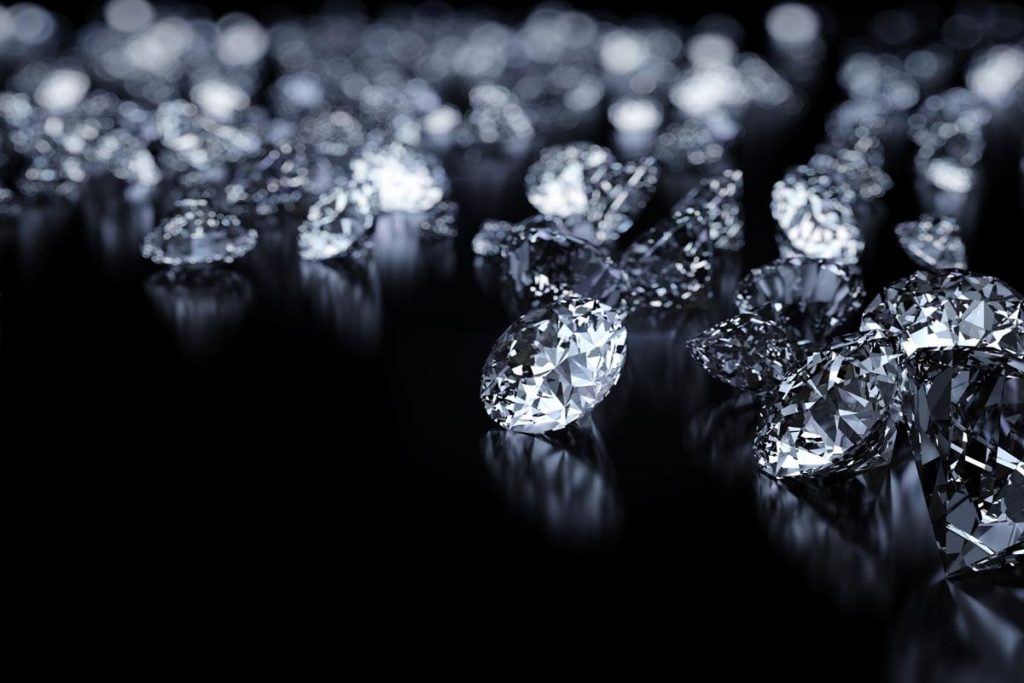Form of Ice Alien to Earth Found Trapped in Diamonds
Unique crystallized water called Ice-VII found trapped as small inclusions in diamonds formed deep in the Earth’s mantle.
Ice-VII is about one-and-a-half times as dense as the regular ice we put in our drinks and skate on in winter, and the crystalline structure of its atoms is different as well. This cubic crystalline form of ice is hypothesized to comprise the ocean floor of the Saturn moons of Titan and Europa, as well as planets outside our own solar system. It has never been found in a naturally occurring form on Earth, until now.
In normal ice, known as ice-I, the oxygen atoms arrange themselves in a hexagonal shape. In ice-VII these atoms are arranged in a cubic shape.

The report by University of Nevada researchers led by Oliver Tschauner, a professor of geosciences, suggests that pockets of liquid water may exist up to 500 miles beneath Earth’s surface—far deeper that previous estimates- after they stumbled upon diamonds belched from hundreds of kilometers below the Earth’s surface.
“Water in diamonds is not unknown, but finding this very high pressure form of water ice intact, that was really fortuitous,
” George Rossman, a mineralogist at Caltech. “That’s what you call discovery.”“One essential question that we are working on is how much water is actually stored in the mantle. Is it oceans, or just a little bit?” study first author Oliver Tschauner from the University of Nevada, said. “This work shows there can be free excess fluids in the mantle, which is important.”
“These discoveries are important in understanding that water-rich regions in the Earth’s interior can play a role in the global water budget and the movement of heat-generating radioactive elements,” Tschauner said.
Researchers stumbled onto a native ice-VII sample by accident, inside a diamond formed deep in the Earth’s mantle, as much as 400 miles beneath the crust. The pressure in the mantle is intense, causing diamonds to form from carbon. But sometimes other substances, like water, get trapped inside these diamonds, in what’s known as an incursion.
The mantle is a layer of mostly solid and very hot rock under immense pressure beneath the crust. It makes up the bulk of the Earth’s volume. It’s got an upper layer, a transition zone, and a lower layer. The upper layer has a little bit of water, but scientist estimate 10 times more water may be in the transition zone, where minerals seem to be more soluble. The lower layer’s minerals don’t seem to hold water as well.
There’s already evidence of water in the mantle in different forms, such as water that has been broken up and incorporated into other minerals. But these diamonds contain water frozen into a special kind of ice crystal, called ice-VII.
“Usually the extremely deep minerals that come up to the surface are not stable once they experience low pressures,” George Rossman, a Caltech mineralogist who worked on the study says. “They crack and whatever inclusions they had in them are lost. But if a diamond comes up fast enough, it doesn’t change.”
The diamonds, which were unearthed from several sites in China and southern Africa, were analyzed using the Advanced Photon Source at Argonne National Laboratory in Illinois. X-rays that bounced off of the rocks revealed that more than a dozen of the diamonds have ice VII.
Oliver Tschauner and team set out to study diamond inclusions — but they weren’t looking for ice. They were hunting for signs of a molecular form of carbon dioxide that might help reveal clues to the cycling of carbon from slabs into the mantle. The researchers used an array of techniques, including X-ray diffraction, infrared spectroscopy and X-ray fluorescence, to try to identify the composition of the inclusions within three diamonds, one from China and two from southern Africa.
The data returned by the Advanced Photon Source synchrotron particle accelerator at Argonne National Laboratory outside of Chicago revealed the presence of a unique type of water ice inside one of the diamonds. Scientists re-imaged the diamond and its unusual ice several times to confirm their discovery.
“We show that ice-VII occurs as inclusions in natural diamond and serves as an indicator for such water-rich regions,” the researchers wrote in their study. “In particular, ice-VII in diamonds points toward fluid-rich locations in the upper transition zone and around the 660-kilometer boundary.”
Thanks to their discovery, ice-VII has been recognized for the first time as a mineral by the International Mineralogical Association. Although the study provided the direct evidence of unbonded water at extreme depths, the researchers were not able to determine how large these water pockets are and how common they are.

































